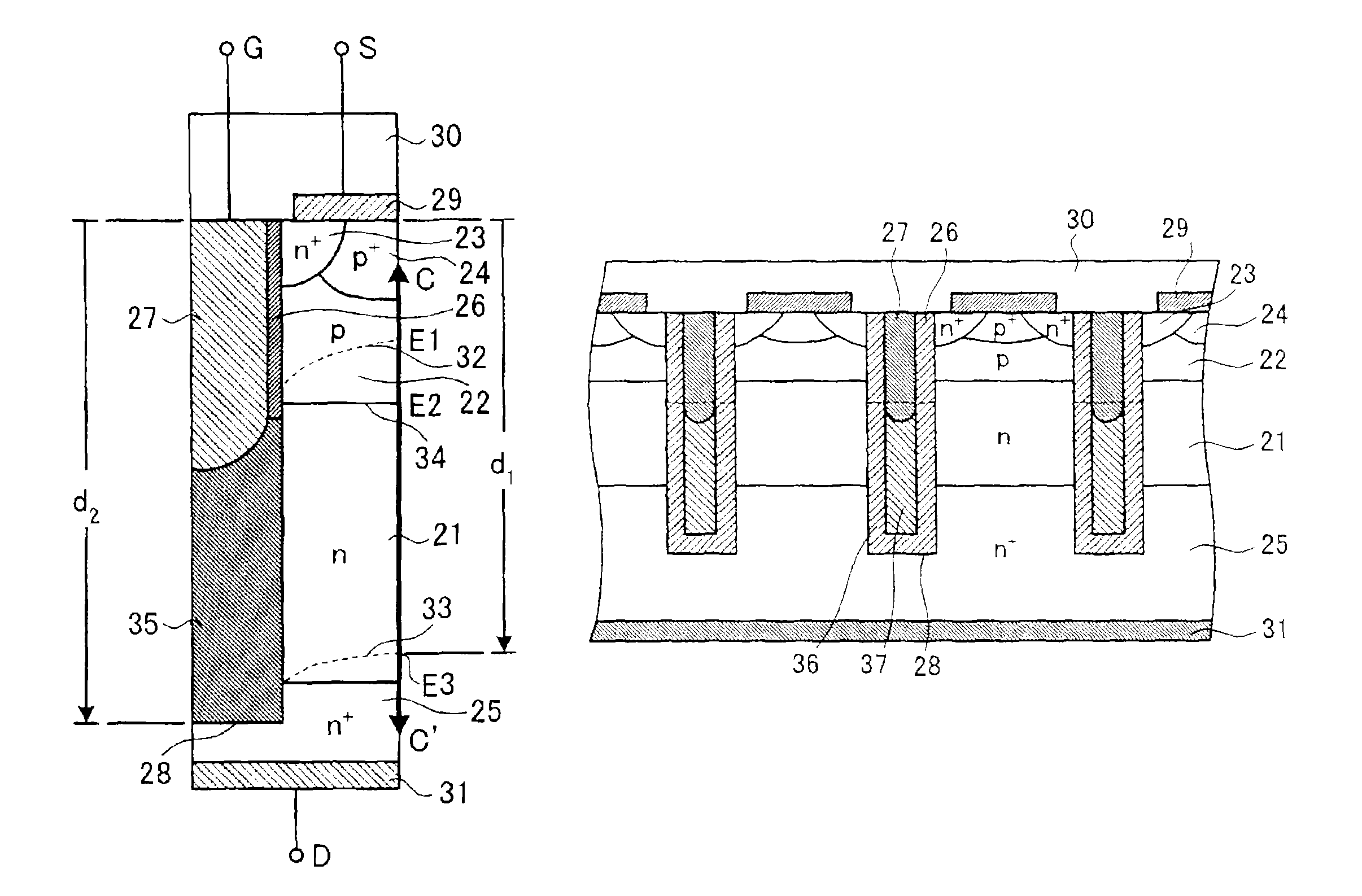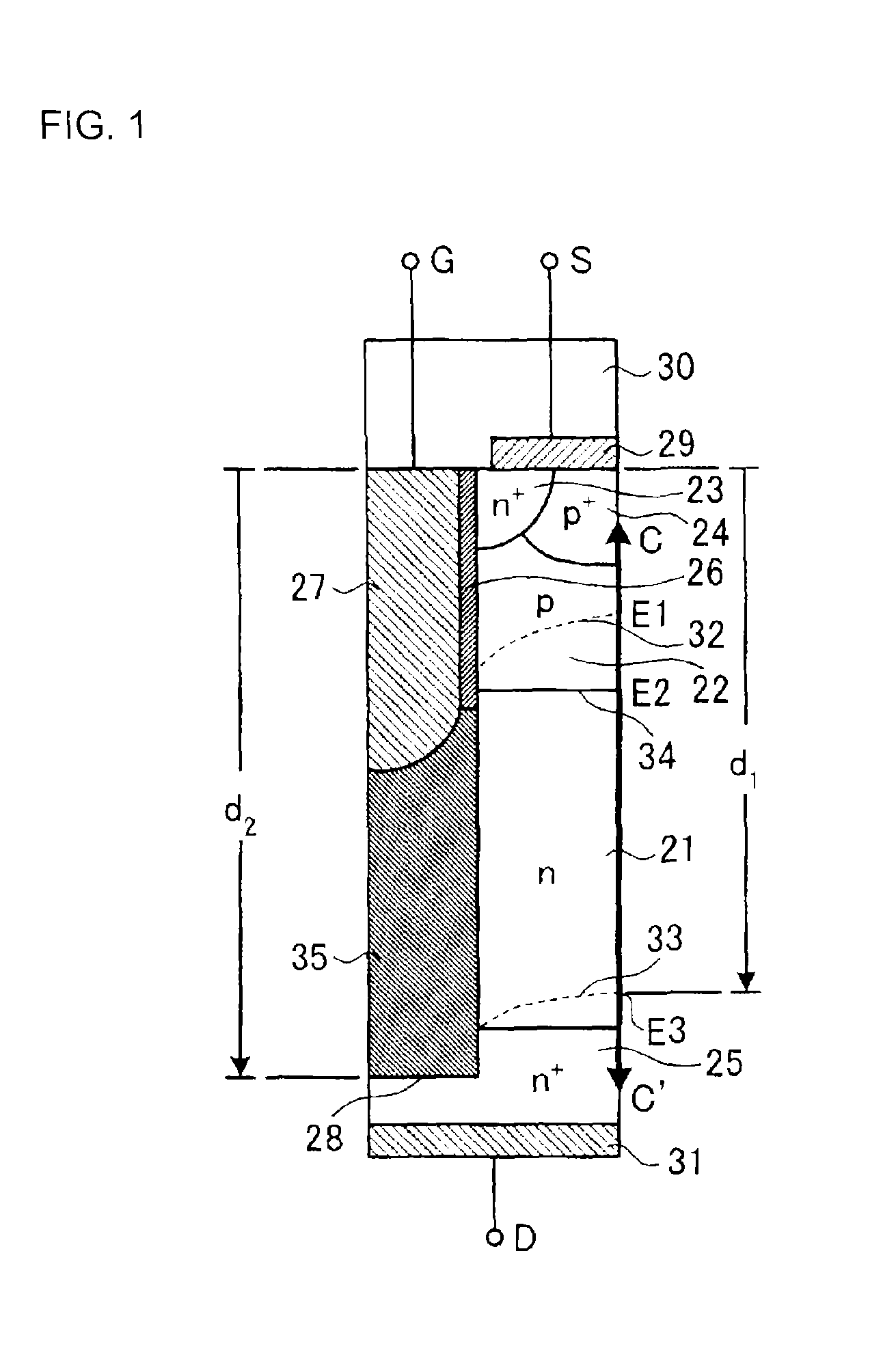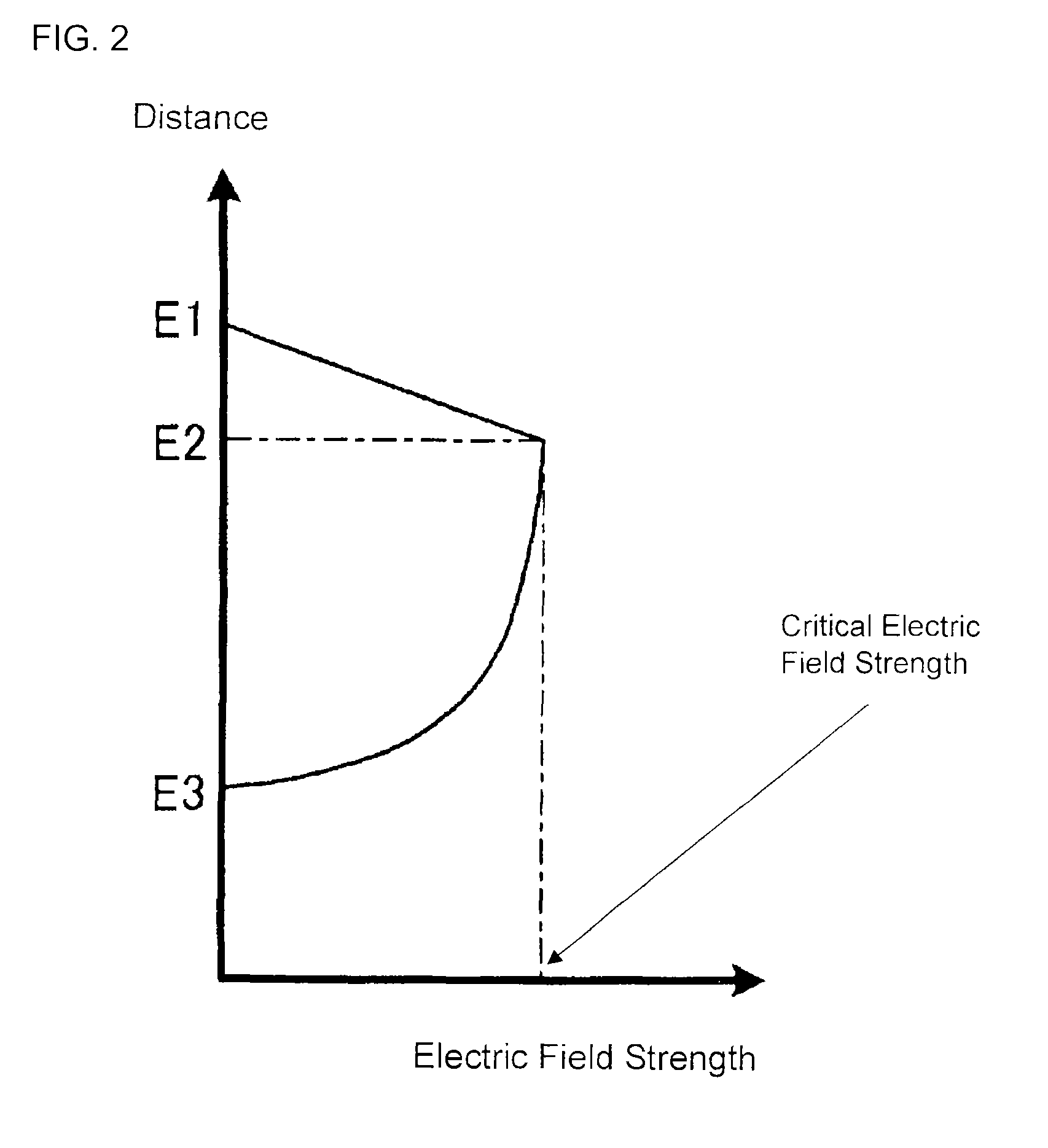Semiconductor device and method for manufacturing the same
a semiconductor and metal-insulator technology, applied in the direction of semiconductor devices, electrical devices, transistors, etc., can solve the problems of reducing withstand voltage, unable to achieve sufficient reduced withstand voltage as the whole device, and sub>2 /sub>on the bottom of the trench does not contribute to reducing on-resistance, etc., to achieve improved withstand voltage, reduce on-resistance, and improve withstand voltage
- Summary
- Abstract
- Description
- Claims
- Application Information
AI Technical Summary
Benefits of technology
Problems solved by technology
Method used
Image
Examples
first embodiment
[0084]FIG. 1 is a cross-sectional view showing the configuration of the trench gate type MISFET according to a first embodiment of the invention. FIG. 1 shows a half cell including the main portion of the semiconductor device. The overall configuration of the actual semiconductor device has the half cell configurations shown in FIG. 1 in succession on both sides such that adjacent configurations are symmetric with respect to the edge line there between (the same thing applies to FIG. 14).
[0085]As shown in FIG. 1, in the vertical trench gate type n-channel MISFET according to the first embodiment, p-base region 22 is formed on a first principal surface side across n-drift region 21, while n+-drain region 25 is formed on a second principal surface side across n-drift region 21. N+-source region 23 and p+-contact region 24 are formed adjacent to each other on the surface layer of p-base region 22.
[0086]Trench 28, formed adjacent to n+-source region 23, extends from the first principal ...
second embodiment
[0103]FIG. 14 is a cross-sectional view showing the configuration of a half cell of the trench gate type MISFET according to a second embodiment of the invention. As shown in FIG. 14, the MISFET according to the second embodiment differs from the first embodiment in that high-permittivity dielectric 35 buried under gate electrode 27 has a double-layer structure including high-permittivity dielectric 36 in an outer portion and high-permittivity dielectric 37 in an inner portion. As other structures are the same as those of the first embodiment, they have the same reference characters and description thereof will be omitted.
[0104]The relative permittivity of high-permittivity dielectrics 36 and 37 in the outer and inner portions is advantageously selected to be higher than that of a silicon oxide film (SiO2), preferably higher than that of a silicon nitride film (Si3N4). Examples of these high-permittivity dielectrics 36 and 37 include the various materials exemplified in the first em...
third embodiment
[0121]FIGS. 37 to 44 are cross-sectional views showing a method for manufacturing the trench gate type MISFET according to a third embodiment of the invention. Firstly, an n-semiconductor layer, which will be n-drift region 21, is epitaxially grown on n+-substrate, which will be n+-drain region 25. Subsequently, a p-type impurity, such as boron ions, is implanted into the surface of the epitaxially grown layer, followed by thermal diffusion to provide a p-semiconductor layer, which will be p-base region 22 (FIG. 37).
[0122]Thereafter, reactive ion etching is used to form trench 28 extending from the surface of the p-semiconductor layer into the n+-substrate (FIG. 38). Then, thermal oxidation is used to cover the inner surface of trench 28 with a silicon oxide film (SiO2) (FIG. 39). The silicon oxide film is high-permittivity dielectric 36 in the outer portion in the MISFET according to the second embodiment. By covering the inner surface of trench 28 with the silicon oxide film, the ...
PUM
 Login to View More
Login to View More Abstract
Description
Claims
Application Information
 Login to View More
Login to View More - R&D
- Intellectual Property
- Life Sciences
- Materials
- Tech Scout
- Unparalleled Data Quality
- Higher Quality Content
- 60% Fewer Hallucinations
Browse by: Latest US Patents, China's latest patents, Technical Efficacy Thesaurus, Application Domain, Technology Topic, Popular Technical Reports.
© 2025 PatSnap. All rights reserved.Legal|Privacy policy|Modern Slavery Act Transparency Statement|Sitemap|About US| Contact US: help@patsnap.com



